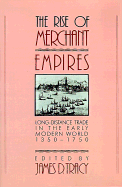Book contents
- Frontmatter
- Contents
- Preface
- Maps
- Introduction
- 1 Structural changes in European long-distance trade, and particularly in the re-export trade from south to north, 1350–1750
- 2 The growth and composition of trade in the Iberian empires, 1450–1750
- 3 The growth and composition of the long-distance trade of England and the Dutch Republic before 1750
- 4 France, the Antilles, and Europe in the seventeenth and eighteenth centuries: renewals of foreign trade
- 5 Productivity, profitability, and costs of private and corporate Dutch ship owning in the seventeenth and eighteenth centuries
- 6 The Dutch and English East India companies compared: evidence from the stock and foreign exchange markets
- 7 World bullion flows, 1450–1800
- 8 Merchant communities, 1350–1750
- 9 Economic aspects of the eighteenth-century Atlantic slave trade
- 10 Marginalization, stagnation, and growth: the trans-Saharan caravan trade in the era of European expansion, 1500–1900
- 11 The “decline” of the central Asian caravan trade
- 12 Merchant communities in precolonial India
- 13 Merchants without empire: the Hokkien sojourning communities
- Index
7 - World bullion flows, 1450–1800
Published online by Cambridge University Press: 01 June 2011
- Frontmatter
- Contents
- Preface
- Maps
- Introduction
- 1 Structural changes in European long-distance trade, and particularly in the re-export trade from south to north, 1350–1750
- 2 The growth and composition of trade in the Iberian empires, 1450–1750
- 3 The growth and composition of the long-distance trade of England and the Dutch Republic before 1750
- 4 France, the Antilles, and Europe in the seventeenth and eighteenth centuries: renewals of foreign trade
- 5 Productivity, profitability, and costs of private and corporate Dutch ship owning in the seventeenth and eighteenth centuries
- 6 The Dutch and English East India companies compared: evidence from the stock and foreign exchange markets
- 7 World bullion flows, 1450–1800
- 8 Merchant communities, 1350–1750
- 9 Economic aspects of the eighteenth-century Atlantic slave trade
- 10 Marginalization, stagnation, and growth: the trans-Saharan caravan trade in the era of European expansion, 1500–1900
- 11 The “decline” of the central Asian caravan trade
- 12 Merchant communities in precolonial India
- 13 Merchants without empire: the Hokkien sojourning communities
- Index
Summary
The purpose of this essay is to review published accounts of bullion flows in the early modern period in order to estimate the magnitude of the flows between sources and sinks of precious metal, and to see if they can yield estimates of flows and balances that are reasonably consistent and coherent. Because the data are so spotty for most of the flows that annual or other short-term figures cannot be obtained, estimates will instead be presented by periods a quarter of a century in length, thus yielding twelve such periods between 1500 and 1800 (Table 7.3). Because Europe was the major region of transshipment from dominant source (the Americas) to principal sink (Asia), the major focus will be on shipments to and from that region. The result will be a brief assessment of the current state of our knowledge of these flows, in the broadest and simplest terms possible. We begin with the sources of precious metal.
PRODUCTION OF SILVER AND GOLD IN THE AMERICAS
The overwhelming dominance of the New World in the production of precious metals in early modern history is illustrated in Table 7.1. It shows that from 1493 to 1800, 85 percent of the world's silver and over 70 percent of its gold came from the Americas. In each century both absolute production and the relative share of the Americas in world production increased, with gold showing the greatest rate of increase in the eighteenth century owing to continued Colombian production and a great increase in Brazilian production.
- Type
- Chapter
- Information
- The Rise of Merchant EmpiresLong Distance Trade in the Early Modern World 1350–1750, pp. 224 - 254Publisher: Cambridge University PressPrint publication year: 1990
- 51
- Cited by



